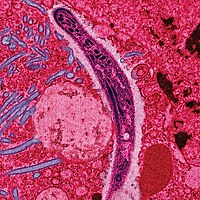
Using Motion Tracking to Measure Avoidance in Children and Adults: Psychometric Properties, Associations With Clinical Characteristics, and Treatment-Related Change.
Sign Up to like & getrecommendations! Published in 2018 at "Behavior therapy"
DOI: 10.1016/j.beth.2018.04.005
Abstract: Avoidance is implicated in many areas of psychopathology, particularly anxiety and its disorders. Accurate, reliable, valid, and objective measurement of avoidance behavior poses methodological challenges. Two key technological advances, increased computing power and the advent… read more here.
Keywords: anxiety; children adults; behavioral avoidance; motion tracking ... See more keywords

0220 Sleep Deprivation Increases Self-Reported But Not Behavioral Avoidance
Sign Up to like & getrecommendations! Published in 2020 at "Sleep"
DOI: 10.1093/sleep/zsaa056.218
Abstract: A common form of emotion regulation is avoidance, in which attention toward negative stimuli results in avoiding (Elliot, 2006). Dysfunctional avoidance is linked to negative outcomes in various forms of psychopathology (Kashdan, Barrios, Forsyth, &… read more here.
Keywords: sleep deprivation; behavioral avoidance; self reported; increases self ... See more keywords

Behavioral avoidance of contagious and non-contagious adults
Sign Up to like & getrecommendations! Published in 2022 at "PLoS ONE"
DOI: 10.1371/journal.pone.0272726
Abstract: Evolutionary theories of disease avoidance propose that humans have a set of universal psychological processes to detect environmental cues indicative of infectious disease. These processes then initiate cognitive, emotional, and behavioral responses that function to… read more here.
Keywords: avoidance contagious; physical injury; non contagious; contagious non ... See more keywords